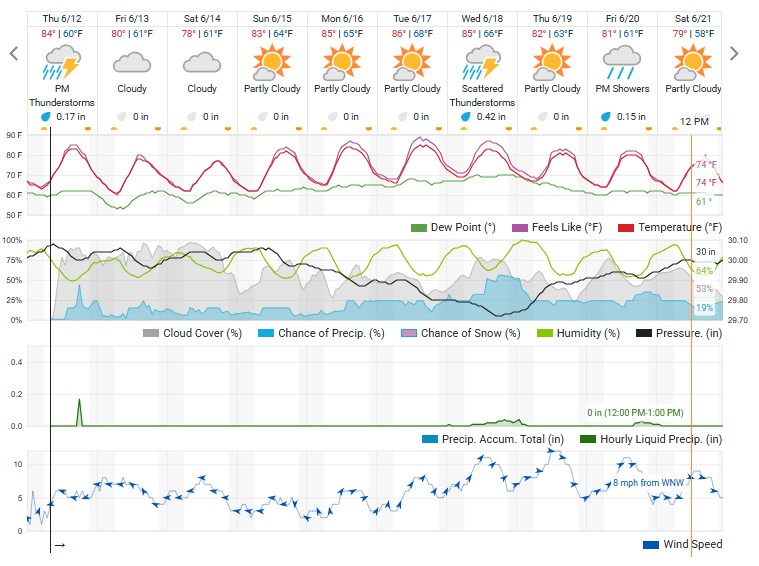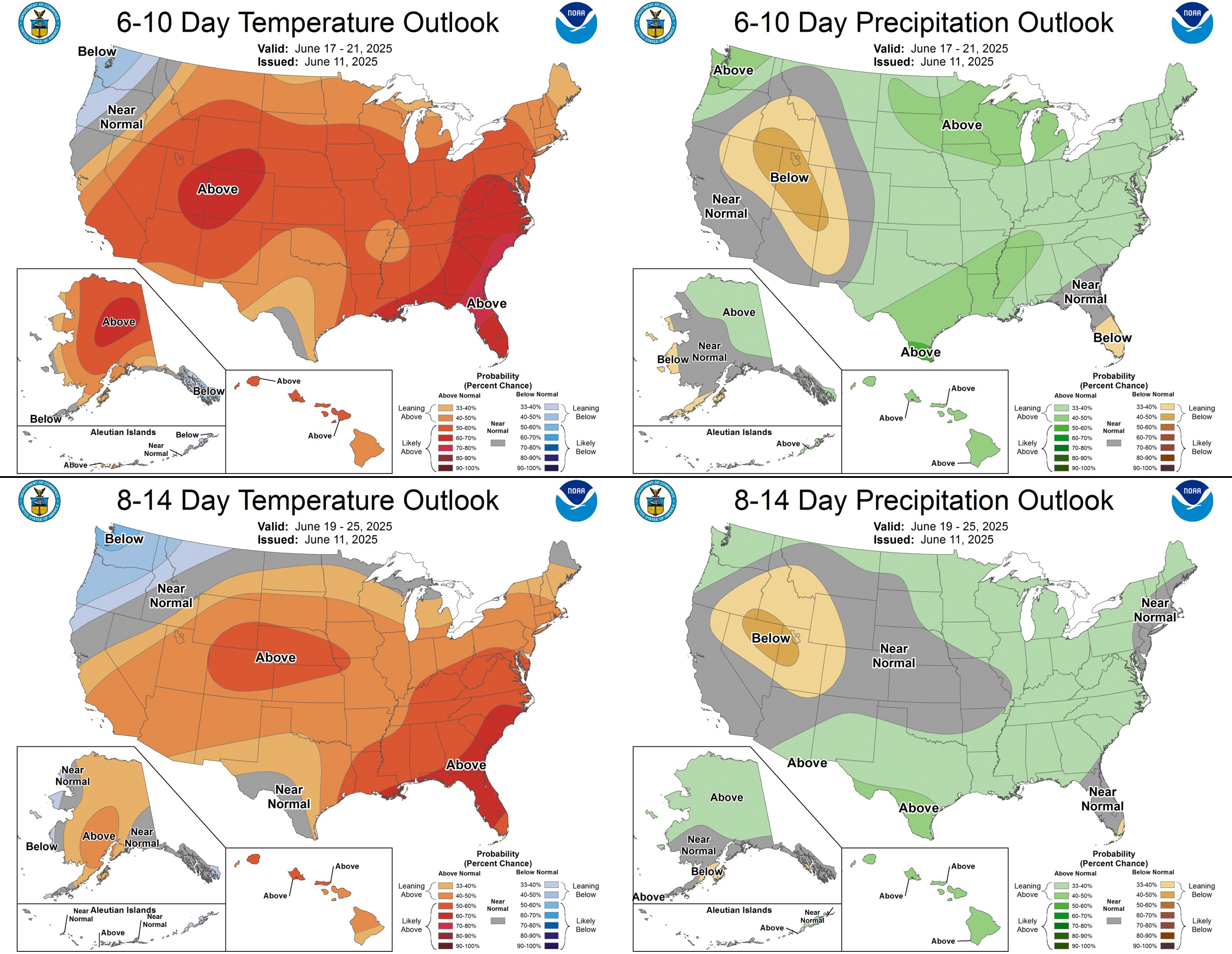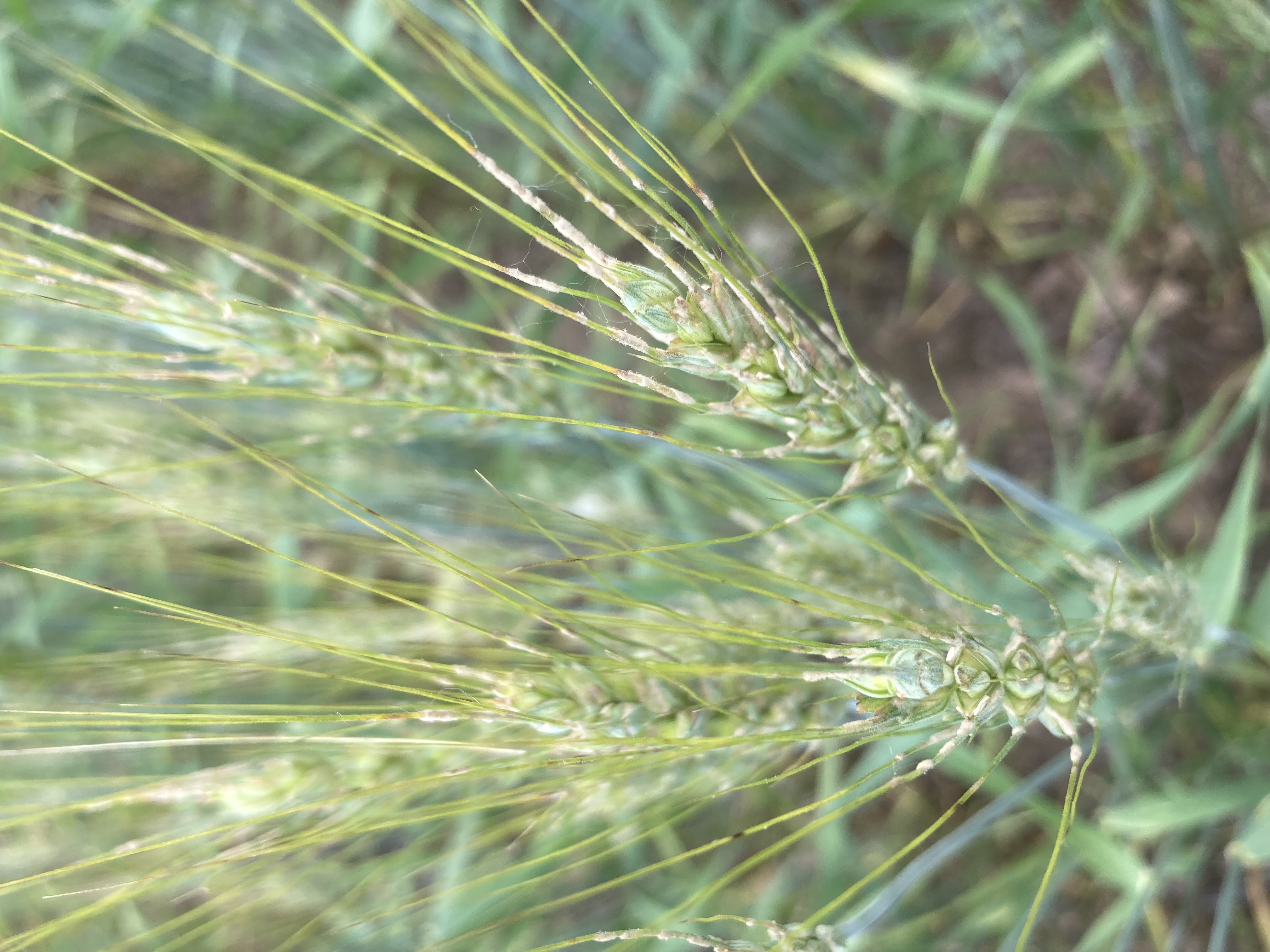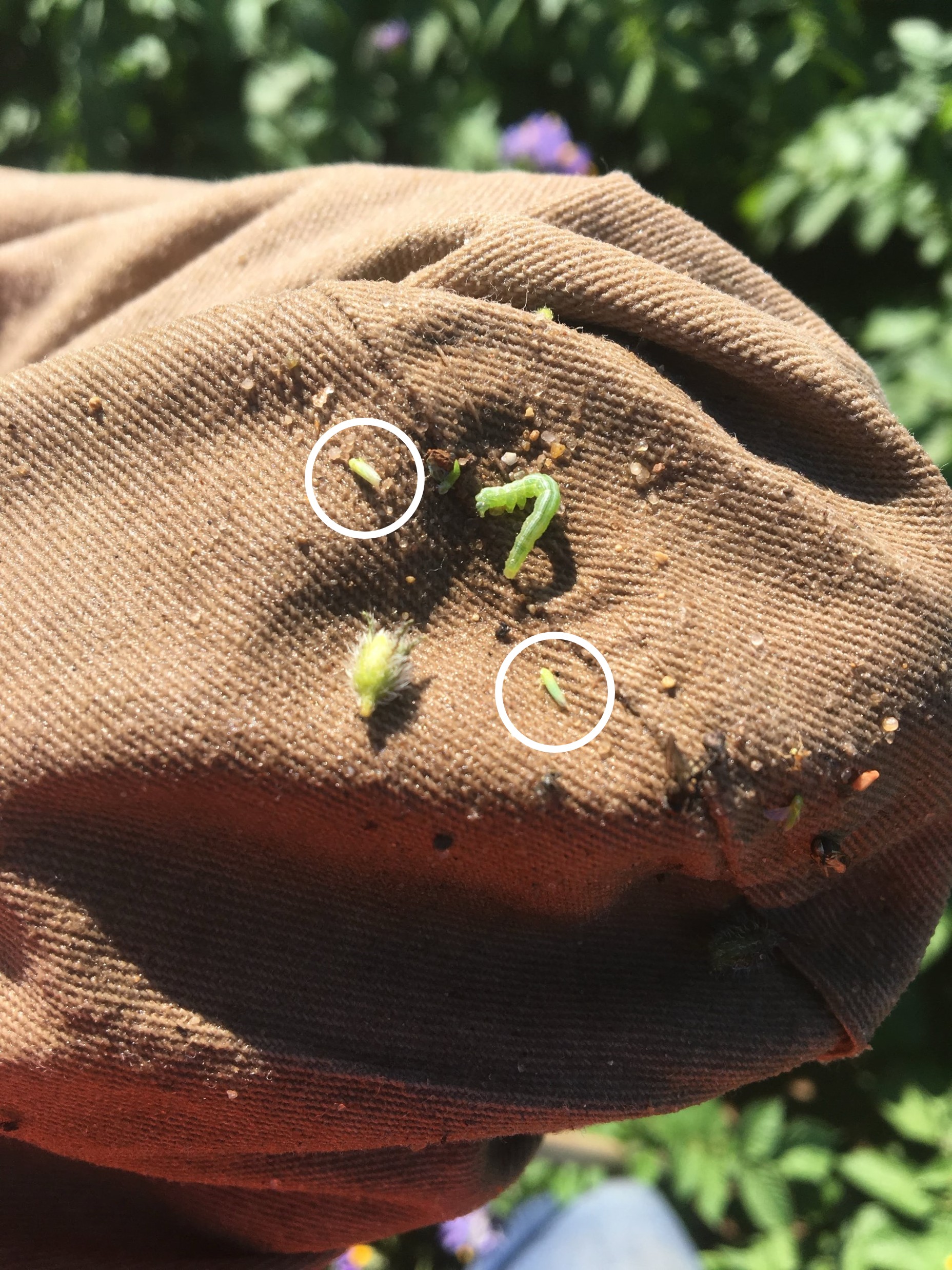Southwest Michigan field crops update – June 12, 2025
Potato leafhopper is present—watch for it in potatoes and alfalfa. Wheat is done flowering and starting kernel fill.

Weather
This last week saw a gradual increase in temperature. Pop up storms resulted in precipitation and hail in some parts of Michigan. Smoke from the wildfires in Canada resulted in hazy skies and slightly cooler temperatures. Temperatures are expected to remain consistently at highs around 80 degrees Fahrenheit and lows around 60 F over the next week. Cloudy and hazy conditions will most likely continue, and scattered storms will bring significant precipitation in the middle of next week.


Crops and pests
Soybean and corn planting is almost wrapped up for the season. Soybeans range from barely emerging to V5. Corn is up to V6 in some places, but it is mostly between V2 and V4. Nutrient uptake is highest during V6 to V10, so sidedress nitrogen will go out soon. Most of the seed corn delayed plantings have been planted by now, and some male rows underwent flaming this week. Tar spot has been found in northern Indiana and Kansas. Even so, best timing for application is still VT to early R1 stages, and higher temperatures coming up will slow down tar spot progress.

Winter wheat has completed flowering and entered kernel fill. At this point, carbohydrates are starting to transfer from leaf tissues to be stored as starch within the kernels. Foliar diseases continue in the canopy for some fields, and in some cases, have moved up to the head. However, overall, the southwest Michigan wheat crop looks good and does not have significant disease prevalence.

Potatoes are at row closure or approaching it. Some fields started flowering. Potato leafhopper was found on the Michigan-Indiana state line. This is a significant pest for both potatoes and alfalfa and results in “hopperburn”, which is v-shaped yellowing and eventual necrosis of leaves. Hopperburn becomes visible after the damage has already been done and cannot be treated. Young alfalfa and new regrowth are especially vulnerable to potato leafhopper damage. With most alfalfa having been cut recently, sweeping for potato leafhopper is especially important now. The article “Potato leafhopper on alfalfa” from PennState Extension contains in-depth scouting information and economic thresholds based on hay value and insecticide costs.

Weekly water use
Estimated crop water use for corn and soybeans is beginning to rise as plant development progresses. V6 corn is now using nearly twice as much water as V4 corn, and water demand will continue to increase with rising temperatures and evaporative demand. For soybeans, closely monitor growth stages, as water use varies throughout development. Continue to monitor soil moisture within the active root zone and check the forecast for upcoming rainfall events.
Wheat is currently in the grain fill stage, requiring approximately 1.19 inches of water per week (around 0.17 inches per day). Evaluate recent and expected rainfall to determine if irrigation is needed. Maintaining adequate soil moisture during the grain fill stage is critical for maximizing grain yield but also monitoring for potential disease under wet conditions.
As temperatures rise next week, continue tracking local weather, particularly precipitation and soil moisture levels, to adjust your irrigation strategies accordingly. Tools like Irrigation Scheduling Tools can help estimate crop water needs and decide timing and application.
Estimated weekly crop water use for field crops in Michigan (in/week) for the week of June 9-15, 2025
|
Crop |
Growth stage |
Constantine |
Entrican |
Hart |
|
|
Reference ET |
1.08 |
1.09 |
0.99 |
|
Corn |
V2 |
0.22 |
0.22 |
0.20 |
|
V4 |
0.22 |
0.22 |
0.20 |
|
|
V6 |
0.42 |
0.43 |
0.39 |
|
|
Soybeans |
V1 1st Node |
0.32 |
0.33 |
0.30 |
|
V2 2nd Node |
0.54 |
0.55 |
0.50 |
|
|
V3 3rd Node |
0.65 |
0.65 |
0.59 |
|
|
Wheat |
Jointing |
1.11 |
1.12 |
1.10 |
|
Boot / Heading / Flowering / Grain fill |
1.19 |
1.20 |
1.18 |
|
|
Soft Dough |
1.08 |
1.09 |
1.07 |
The table above presents estimated crop water use for various field crops across three locations in Michigan. This data helps irrigation management decisions by showcasing potential crop evapotranspiration, calculated based on reference evapotranspiration and crop coefficients for each crop growth stage. It is crucial to note that crop water use values vary across regions due to differences in weather conditions, growth stages, agronomic practices and soil properties.
When using these values for irrigation scheduling, be mindful that they assume all applied irrigation water will be utilized by the plants without any loss. Additionally, these values do not account for any precipitation that may occur during the week of calculation.
Reference evapotranspiration data was obtained from Michigan State University Enviroweather, which also offers a model for determining potential crop evapotranspiration. To access this tool, visit Enviroweather, click on "Crops," select your crop and use the potential evapotranspiration tool by choosing your nearest weather station, the latest date of interest and other crop information.
Field Crops Virtual Breakfast Series
.jpg?language_id=1)
Cercospora in sugarbeets, presented by Jaime Willbur, was the topic for this week’s MSU Extension Field Crops Virtual Breakfast. Mutations of the disease can result in resistance to certain fungicides and/or lesions with less distinct margins that are harder to identify as cercospora.
Recordings of this and all the Virtual Breakfast meetings are closed-captioned and available at the Field Crops Virtual Breakfast webpage and the MSU Extension Field Crops Team social media platforms: Facebook, Spotify, YouTube, Apple Podcasts and Twitter/X.
This work is supported by the Crop Protection and Pest Management Program [grant no 2024-70006-43569] from the USDA National Institute of Food and Agriculture. Any opinions, findings, conclusions, or recommendations expressed in this publication are those of the author(s) and do not necessarily reflect the view of the U.S. Department of Agriculture.



 Print
Print Email
Email